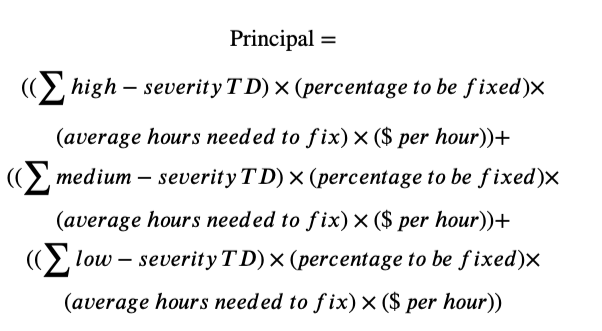An introduction
In today's fast-paced software development environment, the concept of technical debt is both a common occurrence and a critical challenge. Technical debt refers to the cost of additional rework caused by choosing an easy, quick solution over a better approach that would take longer. Like financial debt, technical debt accumulates interest over time, meaning the longer it remains unaddressed, the more time and resources it will require to resolve. This makes identifying and measuring technical debt not just a technical necessity but a strategic imperative for businesses invested in their software's health, maintenance, and evolution. This article provides a practical guide to identifying and measuring technical debt, offering insights into effective techniques for detecting, managing, and quantifying it.
How to identify technical debt
The first step in managing technical debt is identifying it within your project. Technical debt can manifest in various forms, from bugs and outdated documentation to complex refactoring needs or even in the architectural decisions made at the project's inception. Effective identification strategies include:
Code Reviews: Regular code reviews are a powerful tool for identifying technical debt. They allow teams to catch issues early before they become entrenched in the codebase.
Static Code Analysis Tools: Static code analysis tools like SonarQube Server and SonarQube Cloud are instrumental in identifying technical debt by automatically scanning a codebase to detect issues like coding standard violations, complex code constructs, and potential bugs that compromise code quality, maintainability, reliability, and security. These tools provide insights into areas of the code that may be overly complicated, poorly documented, or difficult to maintain, which are key indicators of technical debt. By offering detailed reports and highlighting specific areas for improvement, static code analysis tools empower developers to make informed decisions about where to focus their refactoring efforts, thereby helping to manage and reduce technical debt over time.
Issue Trackers: Maintaining a rigorous issue tracking system can help in identifying areas of the code that are problematic and potentially indicative of deeper technical debt issues.
Developer Feedback: Sometimes, the best indicators of technical debt come from the developers working on the project. Regular meetings or feedback sessions can uncover areas of the codebase that are difficult to work with or maintain.
How to measure technical debt
Once identified, the challenge shifts to measuring technical debt in a way that translates technical issues into actionable insights. Utilizing quantitative metrics derived from code analysis provides an accessible starting point for measuring technical debt. Here are some key metrics to consider:
Complexity Metrics: Measures like Cyclomatic Complexity can indicate the complexity of a program's flow, highlighting areas that may require simplification.
Technical Debt Ratio: This is calculated as the cost of fixing maintainability issues divided by the total cost of development. It gives a percentage that represents the proportion of resources required to pay off the debt.
Code Churn: Code churn, which measures the amount of code changed over a certain period, can indicate areas of the code that are frequently modified and may be prone to accumulating debt.
Duplication: High levels of code duplication can signal technical debt, as duplicated code is harder to maintain and more prone to errors.
The bottom line: quantifying technical debt
Understanding technical debt is one thing; quantifying it to gauge its impact on business operations elevates the management of technical debt from a technical concern to a strategic one. The quantification of technical debt involves considering its principal, interest, and the probability of that interest accruing over time.

Principal: The principal of technical debt refers to the immediate cost of remedying the identified issues within the codebase. Using the example provided, if you have identified 50 issues with an estimated resolution time of 2 hours per issue and a developer rate of $100 per hour, the principal amounts to $10,000.
Interest: The interest on technical debt represents the additional cost incurred over time if the debt is not addressed. This can manifest as decreased productivity, increased maintenance costs, or lost business opportunities.
Interest Probability: This factor takes into account the likelihood of the interest payments becoming necessary. Not all technical debt will accrue interest at the same rate; some debts may remain dormant without significant impact, while others may quickly become costly.
So, when we talk about measuring technical debt, we're also talking about its tangible impact on your business's financial health. By calculating these components—Principal, Interest, and Interest Probability—you can turn the abstract concept of technical debt into tangible financial metrics. This provides a compelling business case for prioritizing the repayment and, what is more - prevention- of technical debt, as it directly impacts your bottom line.
Conclusion
Technical debt is an inevitable aspect of software development, but with the right strategies for identification, measurement, and management, it can be controlled and minimized. By understanding the nuances of technical debt and its potential impact on business operations, organizations can make informed decisions that balance short-term gains with long-term sustainability. Investing time and resources into managing technical debt is not just about maintaining code quality; it's about ensuring the agility, competitiveness, and success of the business in the dynamic world of software development.

